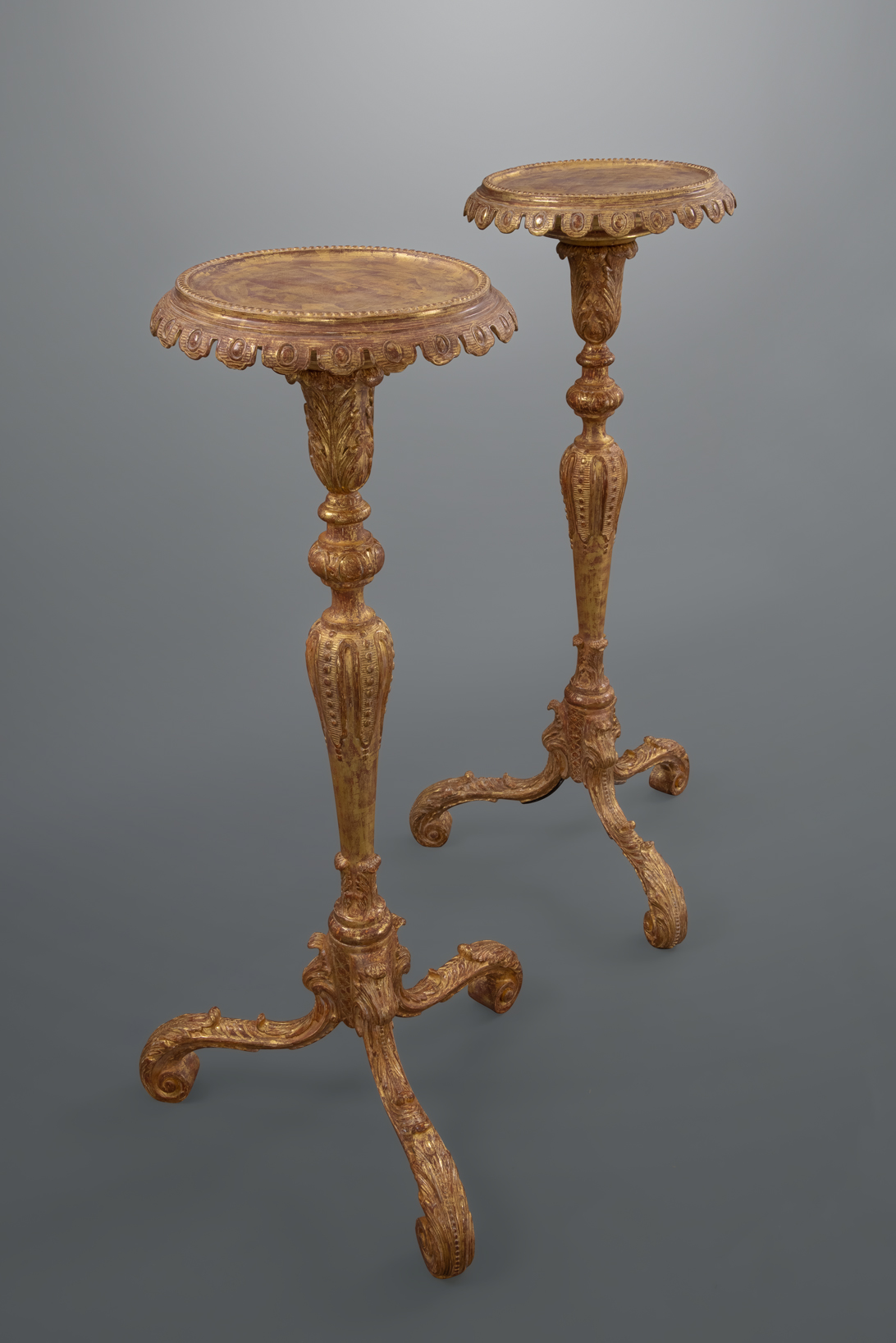
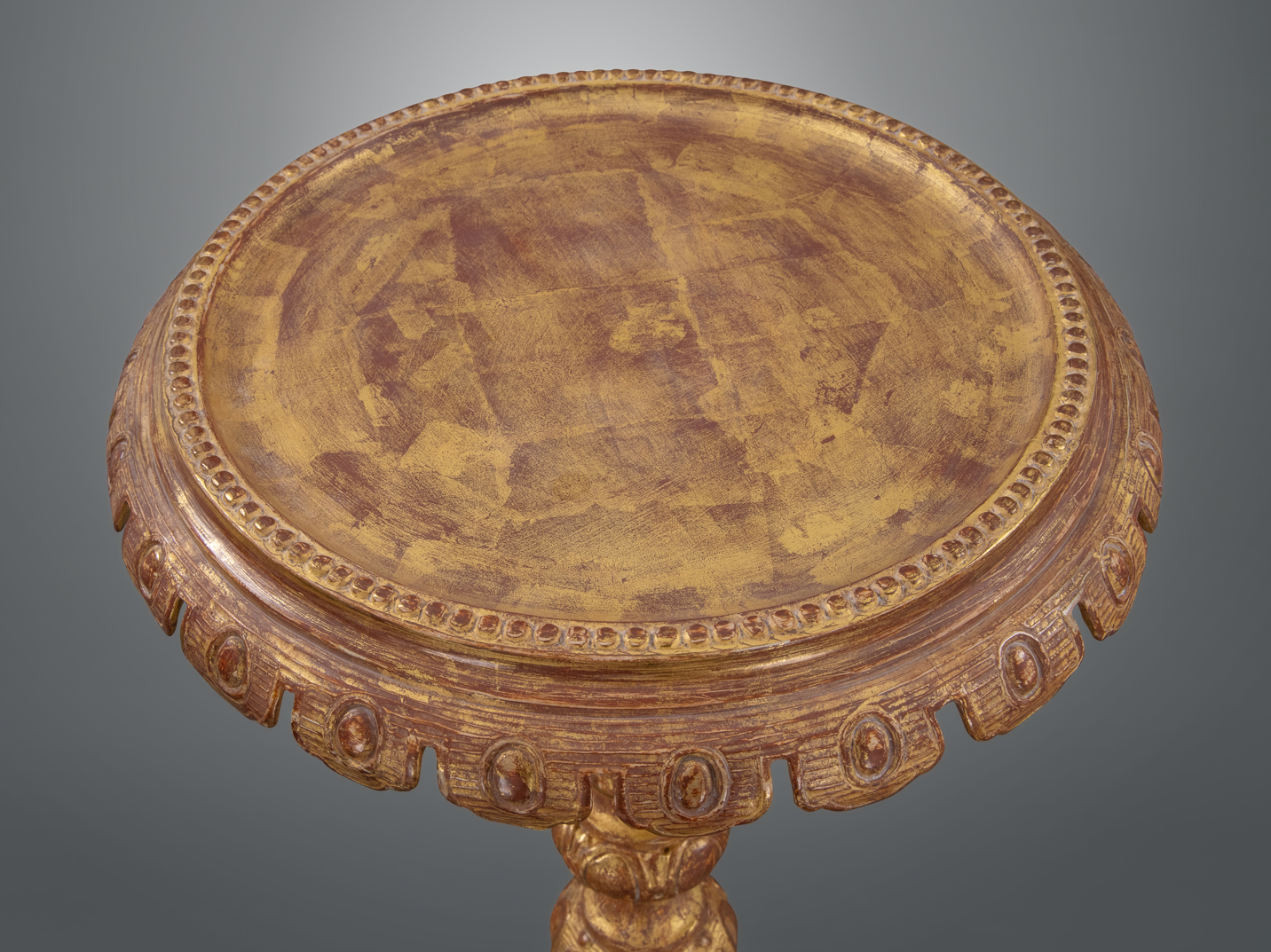
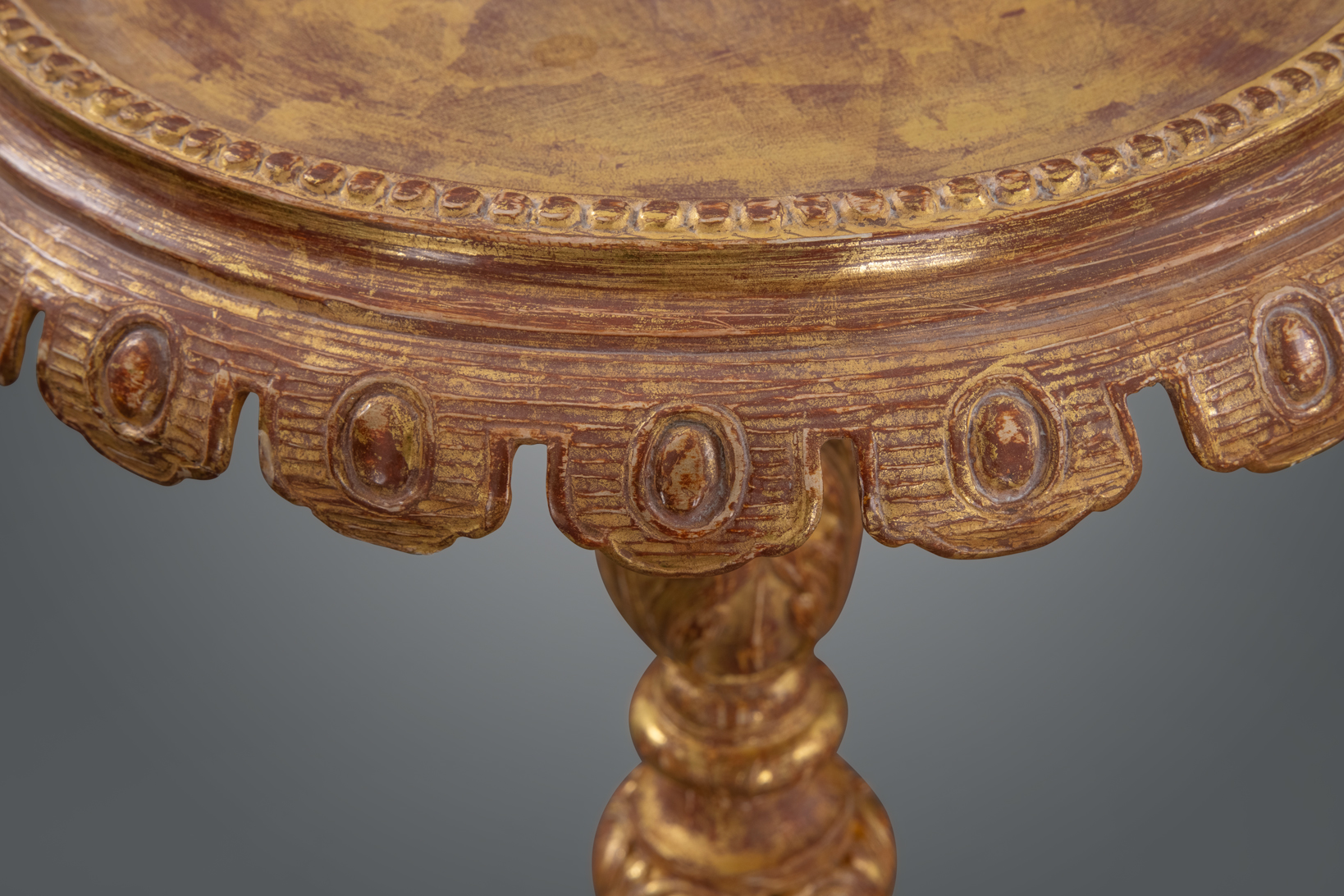
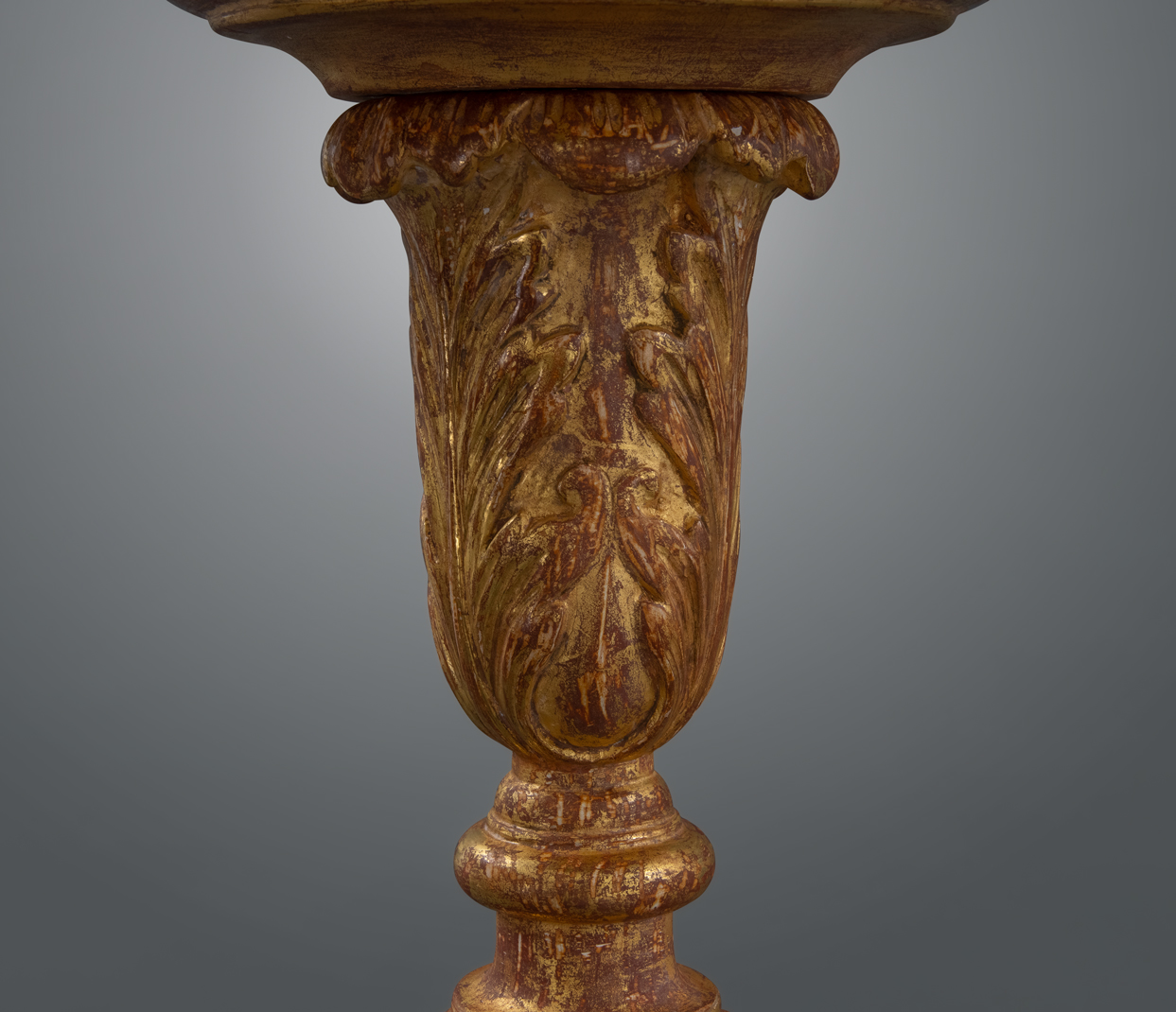



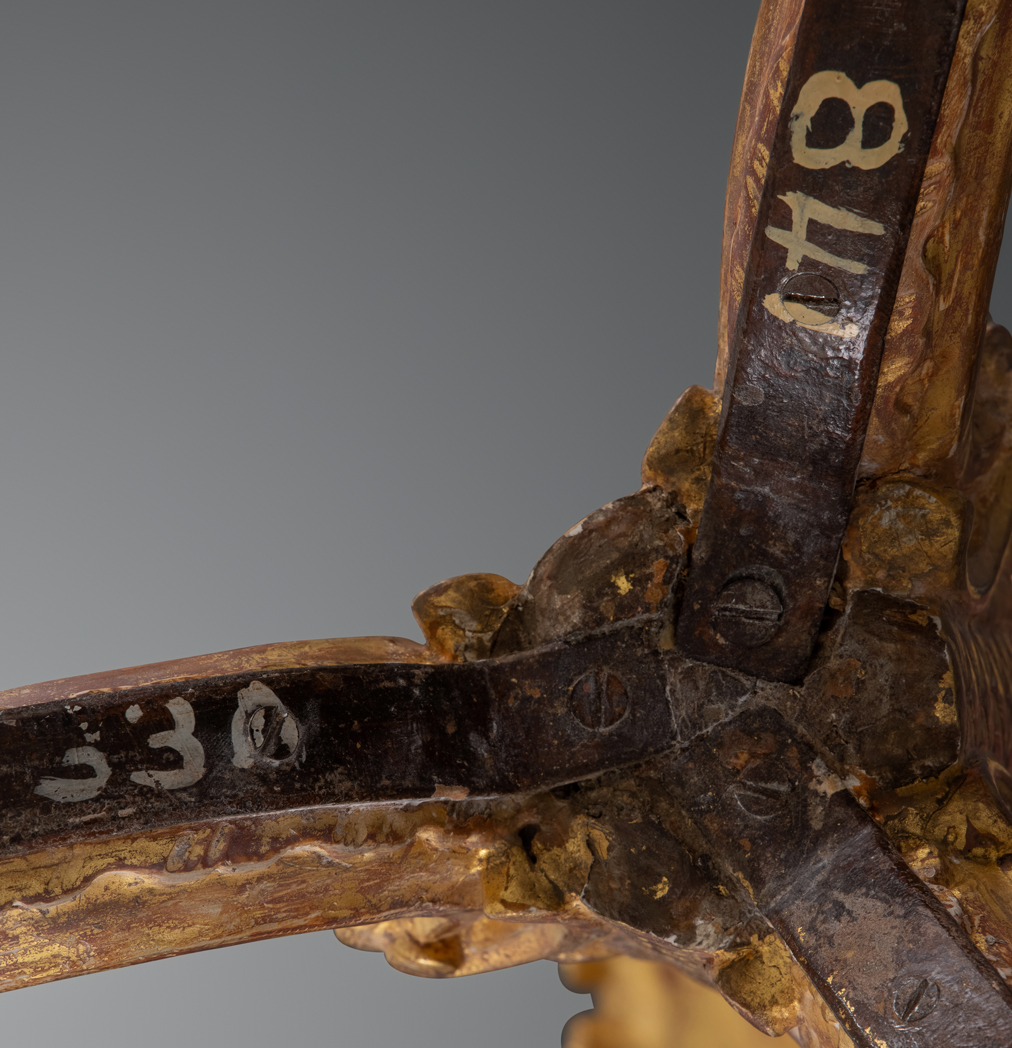
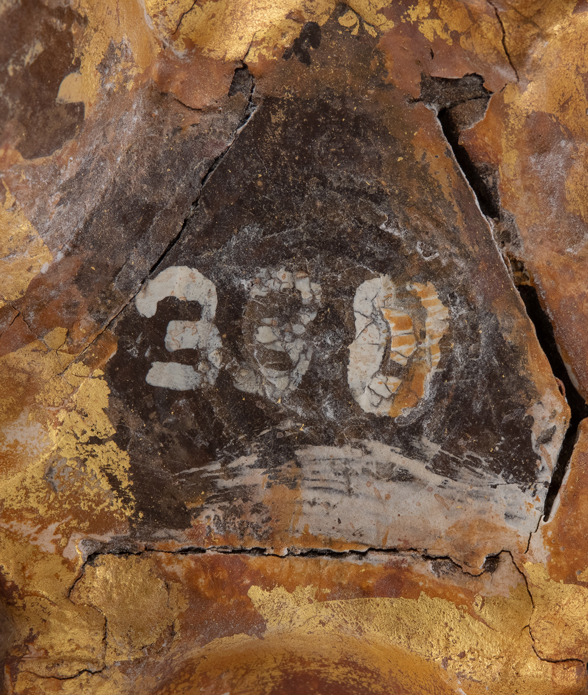
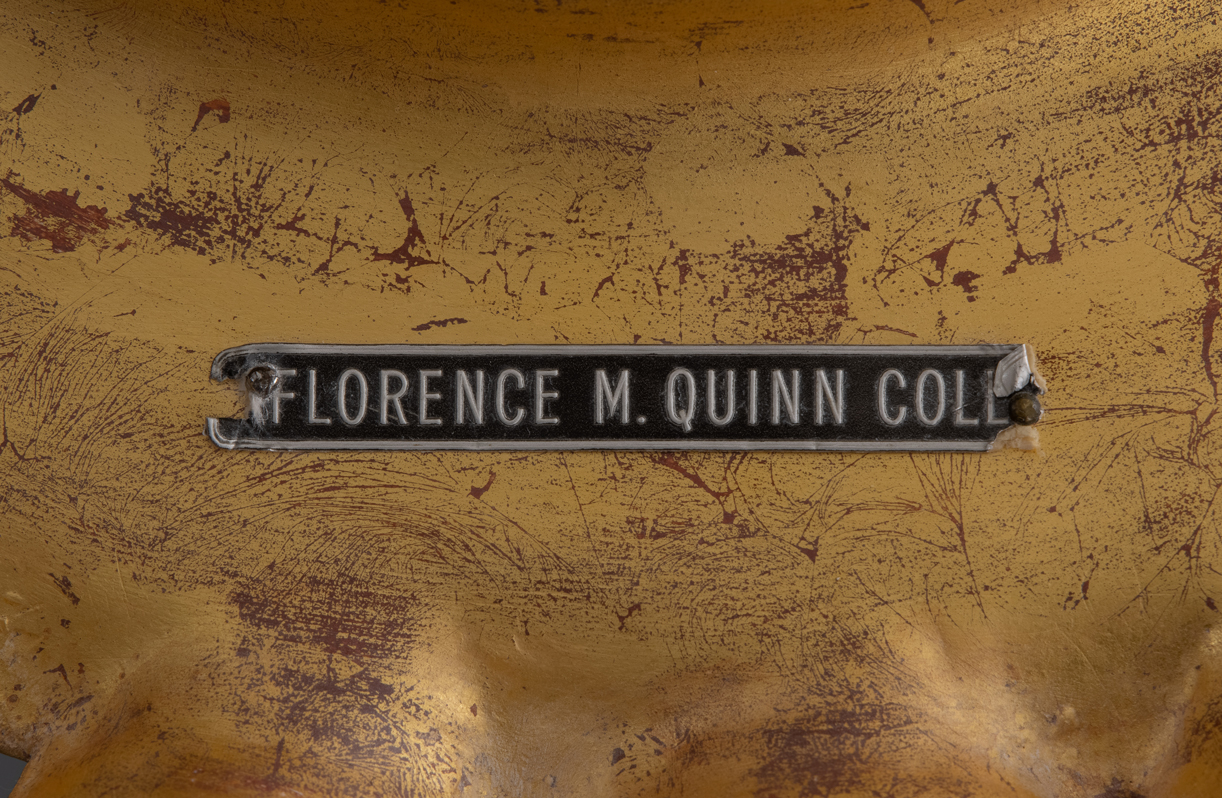
Price Upon Request
Top 14 1/2 ins diameter and 44 1/2 ins high; Feet 20 ins diameter
For questions regarding viewing, shipping, and anything else,
contact us at: [email protected]
An exceptional pair of English giltwood torcheres c.1720 in an unusual neo-baroque style. The lambrequin-headed tops above a knopped inverted baluster stem and three scrolled feet in the manner of Daniel Marot. The torcheres were acquired by the collector Florence M. Quinn and presented to the Huntington Library in California and prior to that were illustrated in print by the esteemed dealers M. Harris and Sons in London and Edward I. Farmer in New York.
Provenance
Probably made for a member of the Cleland family, eventual owners of Stormont Castle in Belfast-the site of the present day Northern Irish Assembly building.
Almost certainly with Moss Harris and Sons in the 1920s and pictured in volume II of their three volume A Catalogue and Index of Old Furniture and Works of Decorative Art from Late Sixteenth Century – Early Ninetenth Century published in 1932 (p.220). Many images used in this catalogue were of past stock and this appears to be the case with the torcheres.
With Edward I. Farmer Inc, New York by 1928 and advertised in Arts and Decoration Magazine July 1928.
Acquired by Mrs Florence M. Quinn and donated to the Huntington Library, California and on view from 1944 until sold at Christie’s New York.
These torcheres are a quite exceptional design that, whilst clearly inspired to some extent by the designs of Daniel Marot and other great baroque designers, have a style very much of their own.

As the image above demonstrates, our torcheres are considerably lighter in their drawing than Marot’s, though the legs and lambrequin tops were clearly designed in the baroque manner. Surviving English giltwoood torcheres of the late 17th-early 18th centuries are very rare survivors and so it is hard to date these pieces as precisely as would usually be the case. A surviving pair in the Royal Collection in London, almost certainly by the Royal cabinet maker James Moore, is now believed to date from 1723-24 although on visual grounds an earlier date would almost certainly be suggested.

The relative scarcity of surviving comparatives also makes ascribing these pieces to a particular maker very difficult indeed but aspects of the detailing of our pair certainly stand up well to comparison with the Moore examples and, as such, a cautious attribution to him does not seem unreasonable.
The Cleland Family and their torcheres
A pair of torcheres of identical form and size to ours was sold by Christie’s King Street in 2004. Crucially this pair descended through the Cleland family line and Christie’s suggested that they might have been supplied to Stormont Castle, the Cleland family home in the 19th century. This same pair of torcheres subsequently became part of the collection of Lord Constantine at Cross Hall Manor.
Stormont is a relatively modern house, built around 1830, and therefore the torcheres could not have originally been made for this house. We believe that our pair and the Cleland pair were originally part of a set of torcheres made for the same residence, presumably for an earlier member of the Cleland family.
In 1899, the Cleland family became involved in a sensational legal case that revolved around a Cleland widow befriending a penniless young artist who then legally took her name. Mrs Cleland did not marry the artist but did marry a Colonel George Shields and this led to a division of the Cleland property with “certain furniture, pictures etc. now at a house called Rooks’ Nest in Banstead” according to Belfast News-Letter published on March 22, 1899.
It seems possible, therefore, that the torcheres could have been divided between the two properties at this point. The artist who caused this furore died in 1926 and the timing of his death fits well with the art market provenance that follows. Unfortunately no accounts relating to the Cleland family and their furniture seem to survive and no photographs of the interiors of Rooks’ Nest in this period have come to light.
Our torcheres on the international art market
A pair of torcheres, almost certainly ours, are illustrated in M Harris and Sons’ A Catalogue and Index of Old Furniture and Works of Decorative Art in one of the firm’s showrooms on page 220 of Volume II.

Although this catalogue was published in 1932, many of the illustrations can be shown to predate this publication quite considerably by cross referencing with adverts that appeared in Country Life and other such publications.
It is almost certain that this illustration dates from the mid to late 1920s as, by 1928, the torcheres were in New York and were advertised in July of that year by the eminent dealer Edward I. Farmer in Arts and Decoration magazine.

We are able to be so sure that these torcheres are our pair because of the stool in the foreground of the advert. When Mrs Florence M. Quinn bequeathed items from her collection to the Huntington Library, this stool-identifiable because of the very distinctive needlework-was also amongst the pieces. Given the extreme rarity of this model of torchere, and given that Mrs Quinn shopped with Farmer, it is inconceivable that both pieces were not purchased from the same source.

Emphasizing our earlier point about the re-use of old photographs, the editorial team at Arts and Decoration reprinted the Farmer illustration once again in their magazine in 1930. In this case, however, it was not specifically labelled as an advert. It was described instead as “a corner of an oak panelled room with early 18th century furniture….courtesy of Edward I Farmer”.

Farmer was one of a number of dealers with a keen eye for interior design and decoration active in New York in this period and was also very well-known for creating luxury items by mounting Chinese jades and porcelains for use in modern applications such as the creation of jade-handled letter openers or silver-mounted jade magnifying glasses. However it is also very clear that Farmer had an extremely keen eye for top-quality English furniture and his client list appears to have been very impressive indeed.
Research and Essay by Christopher Coles.